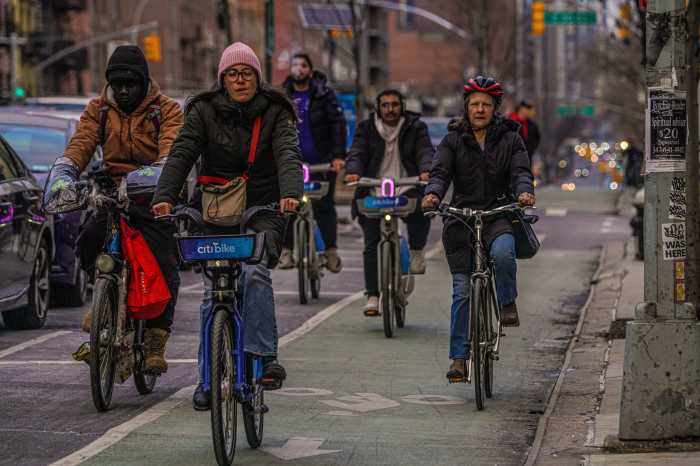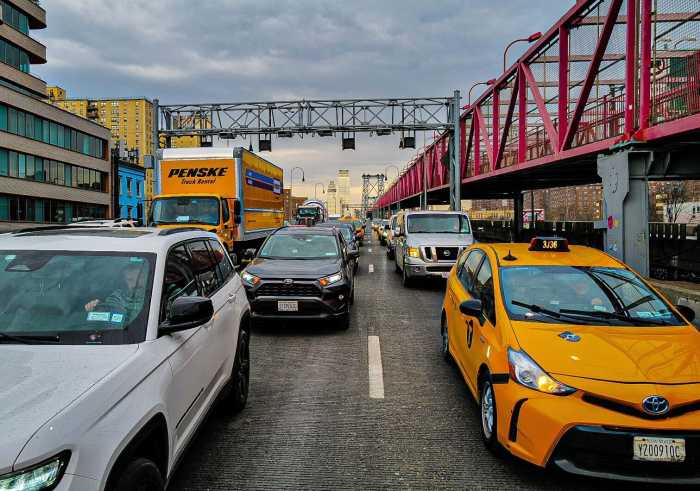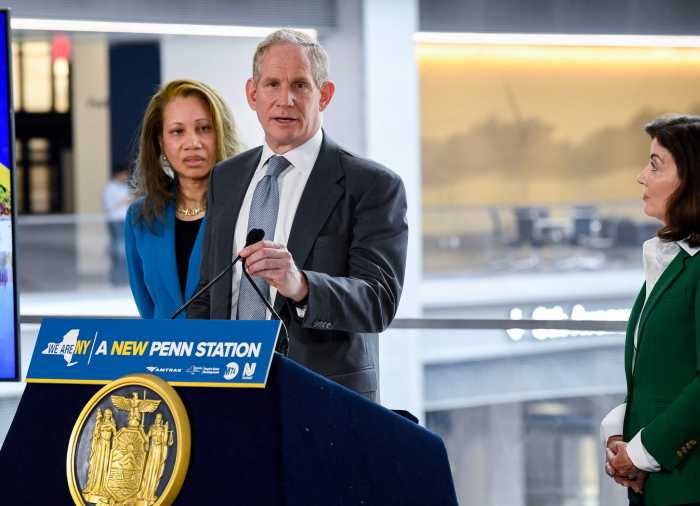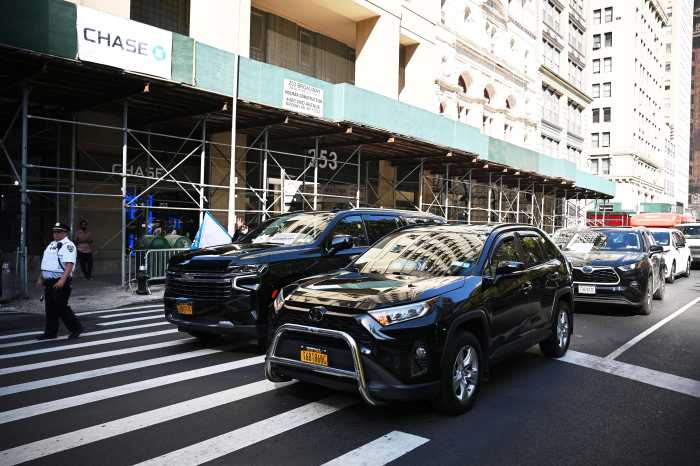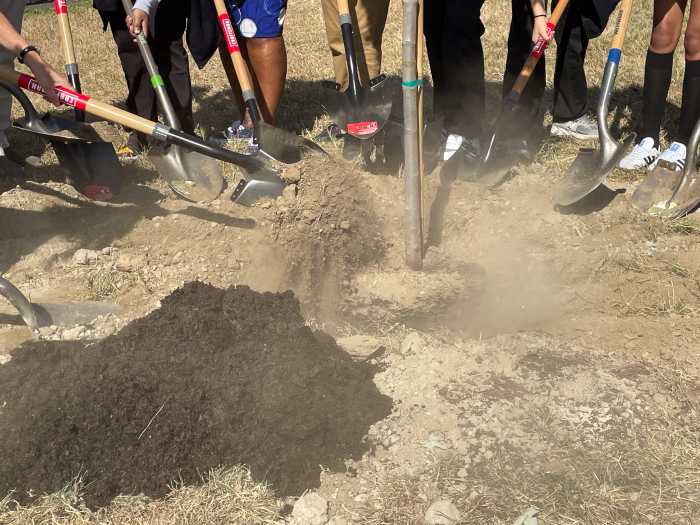The Metropolitan Transportation Authority’s live service alerts on Twitter briefly went dark over the weekend, leaving riders befuddled amid a massive shakeup in the social media platform driven by new owner Elon Musk.
The MTA said Friday evening that it was unable to post its live service alerts on Twitter “due to an API [application programming interface] issue,” leaving in the dust hundreds of thousands of riders who rely upon the Twitter alerts for real-time service advisories for the subway, buses, and commuter railroads, including over a million followers for subway alerts.
The agency pointed riders to the service status section on its main website, WhatsApp, and the TrainTime app for service updates in the interim. Information also continued to be displayed on digital screens in stations, while on Twitter, MTA employees managing the feed could still engage one-on-one with riders seeking answers.
The MTA uses Twitter and other platforms to provide automated, real-time information about service changes, incidents, outages, and snags in the commutes of notoriously impatient New Yorkers.
Access to the API — essentially a tool for web developers to build programs that communicate and work with larger platforms like Twitter — was restored by Saturday morning, the transit agency announced, thanking Twitter’s development team for fixing the issue.
MTA spokesperson Aaron Donovan characterized the loss of access as “sudden,” with no advance forewarning, but was luckily rectified quickly.
“The MTA is appreciative that Twitter has historically understood the importance of its role as a platform for public service messaging and has traditionally not looked at it as an opportunity for monetization,” Donovan said in a statement. “This weekend’s outage was sudden, and rectified expeditiously by Twitter, underscoring their recognition of the importance of this public service information for MTA customers.”
Though the alerts are back online, the incident portends the possibility that they will go dark permanently unless the MTA forks over massive amounts of money to Twitter each month.
The MTA is far from the only government agency reliant on Twitter to communicate issues with the public, and many others also went dark this weekend, such as Bay Area Rapid Transit, the MTA’s equivalent in the San Francisco Bay Area. Non-transit agencies like the National Weather Service were also affected.
Twitter could not be reached for comment on Sunday; an email to the company’s press office yielded an auto-reply of a poop emoji, which Musk had previously announced. Musk laid off virtually the entire communications team at Twitter, along with many other departments, in November, soon after completing his $44 billion purchase of the social media platform.
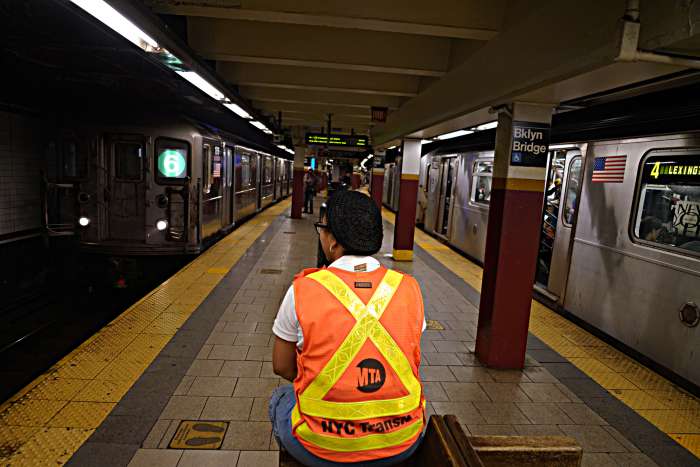
Among the massive changes Musk has pushed through at the company, which he took private, is restricting access to the API, attempting to monetize usage that had previously been free. For individuals, limited access is available to the API at $100 per month, but for large companies and agencies like the MTA, the most basic package starts at a jaw-dropping $42,000 per month, totaling just over half-a-million dollars annually.
Twitter initially announced it would no longer offer free access to the API in February, but that didn’t actually happen. The company announced the new subscription tiers in March, but didn’t provide a timeline for when non-subscribers would lose access to the API.
The cash-strapped MTA has not paid for access to the API previously, Donovan confirmed, but is evaluating whether to do so in the future so it can continue posting live alerts.
Like many of his ideas for Twitter, Musk has dubiously said that restricting API access is intended to deter spam bots on the platform, except for the ones with “good content.” Unsurprisingly, the move has done little to curb the presence of spam bots on the platform. But agencies like the MTA access the API in order to post automated, live alerts as problems arise throughout the transit system — a “bot” in some sense, but one providing a crucial channel of communication between government and the public.
Musk’s API restrictions come as he pushes through his heavily-criticized overhaul of Twitter’s verification system. In the past, accounts became eligible for a blue check mark if Twitter verified that they were who they said they were, but now users can only be verified if they pay $8 for “Twitter Blue,” which also enables longer tweets and the ability to edit tweets.
Verified accounts are not distinguished between those who are who they say they are and those who paid, making it easy to impersonate notable figures despite Twitter’s rules against such behavior, and crackdowns on those specifically impersonating Musk to demonstrate the policy’s pitfalls.
Initially, there was concern that this would allow nefarious actors to impersonate official government accounts like the MTA in times of crisis, but Twitter has since rolled out a feature that allowed the MTA to become verified as an “official organization,” with a gold check mark.
On Monday, Musk’s SpaceX will launch “Starship,” the largest and most powerful rocket in history, into space for testing. Musk intends for the rocket to one day bring humans to Mars and beyond, although several previous launches have ended in a fiery inferno.
Read more: 7 Train Service Disruptions in Manhattan



